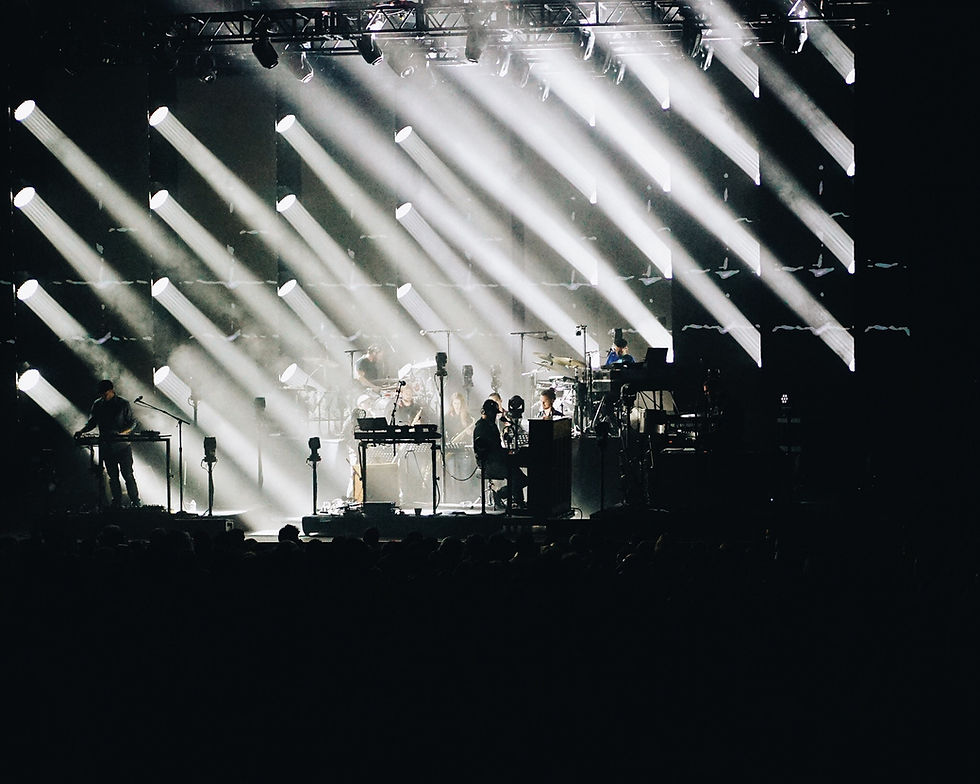How To Make Boring Gigs Suck Less
- @LimeLightWired

- May 3, 2023
- 4 min read
Updated: Apr 29, 2024
Boring and mundane gigs will leave you feeling unfulfilled creatively, but they often pay the bills. Listen, every lighting designer and programmer has gigs that aren't particularly exciting or challenging. However, you may not deliver your best work when you've checked out of a job. There are ways to make even the shittiest of gigs less shitty. This article will explore tips and tricks to help you elevate your work and challenge yourself creatively.

Master the Gear
One of the most unique factors of every gig is the gear involved with it. It's a pretty straightforward thought that the more you know about the equipment you're using, the easier it will be to maximize what the fixture offers. Different fixtures have different parameters, giving you various artistic tools to leverage. The more you understand these parameters, the more you can manipulate the fixture to create different looks. If you find yourself bored or without motivation, search the internet for the gear you're working with, find a parameter you may not be totally comfortable with, and familiarize yourself with what is going on.

Take the time to familiarize yourself with as many fixtures you're working with as possible. The more you know about the gear, the more creative freedom you'll have. Even more importantly, when you cross paths with these fixtures again, you'll already know how to get the most out of them.
Challenge Your Programmer-Self
Maybe you are a wizard and already know everything there is to know about every fixture you're working with. If so, that's amazing! Now let's put that knowledge to work. Another way to breathe life into a dull gig is to challenge yourself as a programmer.
Program new cues or effects with parameters you may not have used as much before. This can add a new creative dynamic to your shows. You could also develop new macros or ways to integrate cues, such as linking all of your intensity effects to a BPM fader or creating a custom color picker.

Advanced programmers develop a "base showfile" to start each gig with. This could include palettes, presets, cues, and basic settings they know they will need at every event. This saves time and allows you to think about adding more advanced programming to a show, especially when programming time is limited. Add something new to your showfile for each gig, whether a new cue or a new effect. This will keep things fresh and interesting for you. Work on a new skill with each gig. For example, if you've never used cloning or pixel mapping before, take the opportunity to experiment with them at your next gig.
Challenge Your Inner Designer
Maybe you already have a complete showfile or feel confident with your programming approach. Another way to get engaged with a gig is to invest creatively in it. Challenge your inner designer by trying new approaches. Mix up your go-to color combinations, experiment with new positions, refresh your gobo choices, or even adjust timing. Finding new ways to enhance the production value of every gig is a solid way to get booked over and over again.

Limiting yourself is a great way to strengthen design muscles you may not use as often. Young LDs often get encouraged to work entire shows without using any strobing. This helps them learn to lean on other methods of accenting music that aren't so aggressive on the audience. Doing this makes you more agile in the face of unique or unexpected requests. You never know what challenges a gig will present. Some jobs will tell you not to use a specific competitor's color, and you have to be able to keep everyone happy while still elevating the production value of the show.
Put yourself in the mind of the audience. Think about who they are and what they would respond to. For example, a corporate crowd wouldn't enjoy extreme design choices if they couldn't see the keynote speaker first. Keeping that in mind, maybe a creative way to get engaged is to ensure the keynote speaker looks incredible!
Open Yourself Up To Feedback
Feedback can help you to identify areas for improvement and develop your skills. Talk to the person in charge of the event: The person in charge of the event, whether it's the producer, director, or event coordinator, is the one who ultimately decides whether the lighting design is effective or not. It's important to get their opinion on your work. Ask them what they thought of your lighting design and if there are any areas where you could improve. Do this with caution.. clients can get "clienty" really quickly and you want don't want to create more problems than there already are. 🤓
Taking pictures of your lighting design and posting them online or in a group chat can be a great way to get feedback from others. You can post your work on social media platforms like Facebook, Instagram, or Twitter, or you can share it with a lighting design group on a platform like Slack or Discord. Be open to feedback from others and take the time to respond to comments and questions.
Be open to criticism, but take it with a grain of salt: Not all feedback will be helpful or relevant to your work. Remember that everyone has opinions, and not all feedback will be useful or applicable to your work. Use feedback as an opportunity to learn and improve your skills, but also to develop your own creative voice and style.

Conclusion
Taking the suck out of gigs is all about challenging yourself creatively. Master the gear, challenge yourself as a programmer and designer, and open yourself up to feedback. Remember that each gig is an opportunity to learn and grow as a lighting professional. Don't be afraid to try new things and take risks. You can flip even the shittiest gigs into rewarding experiences by pushing yourself creatively.









Comments